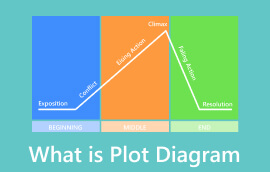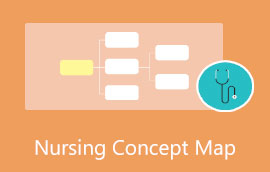Fast & Convenient Steps to Create a Storyline Plot Diagram
In most cases, we keep reading a book or watching a certain movie or series because of the story. One of the main reasons is because they kept us hooked from beginning to end. It also means the story has a good plot. Now, if you’re a story lover or a writer, you might want to view the plot using a visual presentation. Yet, if you do not know how to create a story plot diagram, you are on the right track. Here, learn how to make your desired plot chart story easily and effectively.

- Part 1. What is Plot Diagram for a Story
- Part 2. How to Use a Plot Diagram for a Story Telling Better
- Part 3. How to Do a Plot Diagram for a Story
- Part 4. FAQs About Story Plot Diagram
Part 1. What is Plot Diagram for a Story
A plot diagram for a story is like a roadmap that helps us understand how a story is put together. It is a linear graph that maps out the sequence of events in a story. It's made up of different elements that show what happens from the beginning to the end. The elements of the plot contain exposition, conflict, rising action, climax, falling action, and resolution.
The exposition presents the main characters and the setting, like where and when the story takes place. Then, there's a problem or a challenge that sets the story in motion, called the conflict. As we move into the middle of the story, we see the characters facing more crises. This is called the rising action, and it builds up to the most exciting part of the story, the climax. The climax is where the main problem reaches its peak. After the climax, the story starts to wind down in the falling action. We see how the characters deal with the aftermath. Finally, in the resolution, we find out how everything ends and if the characters' problems are solved or not.
The different parts of the plot work together to create an engaging and satisfying tale.
Part 2. How to Use a Plot Diagram for a Story Telling Better
Plan Your Story
Before you start writing or telling a story, use a plot diagram to plan it out. Think about the beginning, where you introduce the characters and the setting. Then, consider the conflict or problem that will drive the story.
Build Tension
As you move into the middle of your story, use the rising action part of the plot diagram to create tension. This is where you can introduce more challenges or obstacles for your characters to overcome. It keeps the audience interested and eager to know what happens next.
Create Excitement
The climax is like the most exciting part of your story. It's where the main problem reaches its peak, and everything feels intense. Make sure this part is gripping and captivating to keep your audience hooked.
Wrap Things Up
After the climax, use the falling action to show how the characters deal with the aftermath of the big events. This helps the audience understand the consequences of what happened.
Give Closure
The resolution is where you tie up all the loose ends. It's like providing closure to your audience. Let them know how the story ends and whether the characters' problems are solved or not.
Keep Your Audience Engaged
Using a plot diagram helps you maintain a well-structured story. It ensures that your narrative flows smoothly and keeps your audience entertained from start to finish.
Balance Pacing
The plot diagram also helps you balance the pacing of your story. You can control when to introduce tension, when to provide relief, and when to deliver those exciting moments.
Part 3. How to Do a Plot Diagram for a Story
There’s no better way to do a story plot diagram than on MindOnMap. It is a user-friendly tool that acts as a helpful companion for creating story plot diagrams. A web-based program that allows you to create different diagrams according to your needs. With MindOnMap, you can easily add visual elements like shapes, lines, and text to your plot diagram. Also, it offers customization options, enabling you to choose colors, styles, and fonts. Moreover, it supports collaboration, allowing multiple people to work on the same diagram simultaneously. Thus making it great for teamwork and group projects. You can access MindOnMap through a web browser. It ensures that you can create your diagram from virtually anywhere with an internet connection. Additionally, an offline app is available for download if you prefer to work without an internet connection.
Furthermore, its auto-saving feature ensures that your work is always protected, even in unexpected situations. In simple terms, MindOnMap serves as a friendly guide and creative tool. To create a story plot diagram using this tool, follow the tutorial guide below.
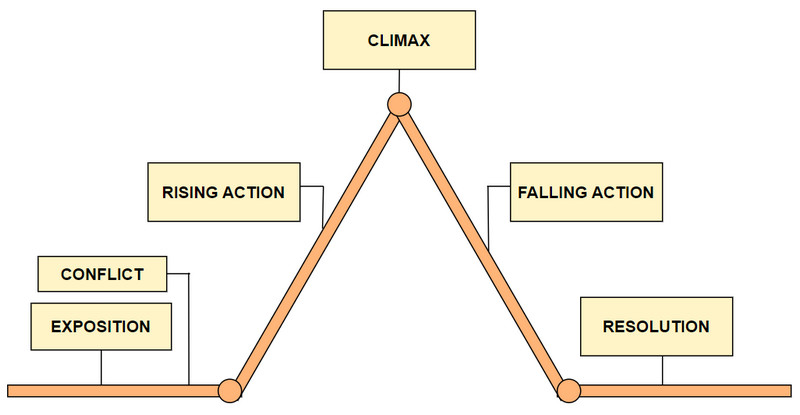
Get a detailed story plot diagram.
To begin with, open your preferred browser to access the official website of MindOnMap. When you’re there, choose between the Free Download or Create Online buttons. Afterward, sign up for an account.
Secure Download
Secure Download
Once you’re in the main interface, select a layout from the provided options. In this guide, we’ll use the Flow Chart layout. Now, you’ll be directed to the editing interface.
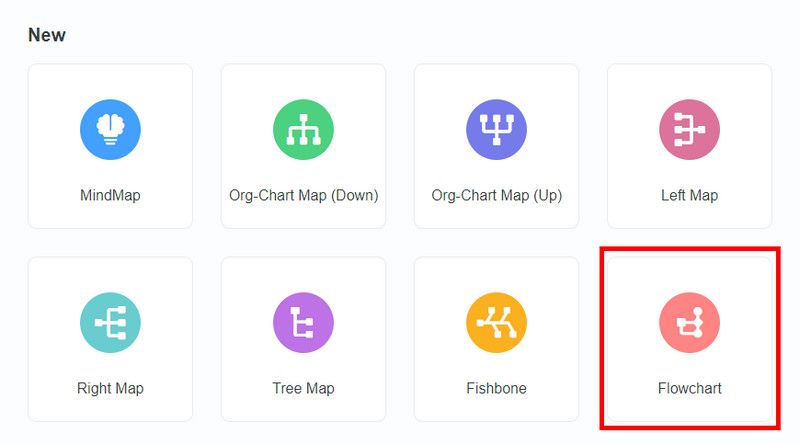
On the left-right-hand corner, click the arrow icon to view all the Shapes. Then, choose the shapes, lines, or other elements you want to add to your plot story diagram. Customize your diagram based on your preferences.
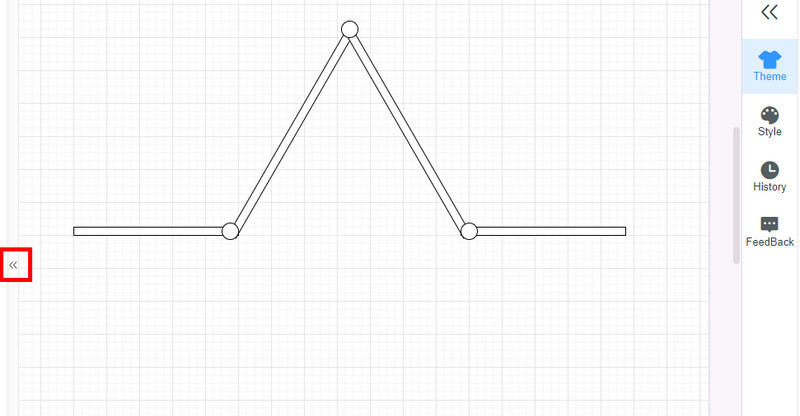
Now, you have the option to collaborate with your friends or colleagues. Click the Share button located in the upper-right corner. In the dialog box that prompts, you can customize the Password and Valid Until.
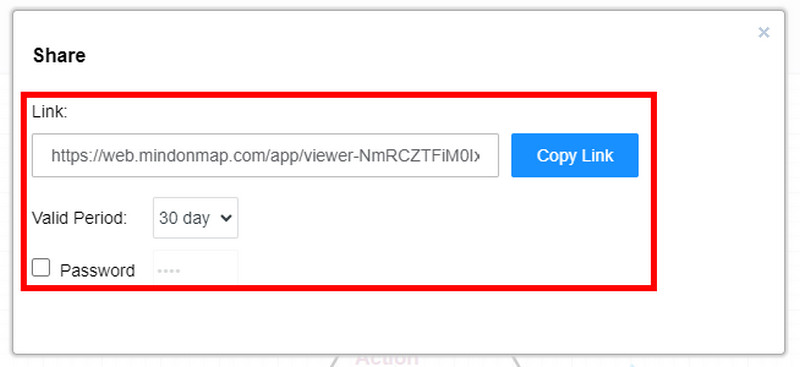
When you’re done with your diagram, click the Export button and select your desired output file format. Finally, wait until the process is completed, and the diagram will be saved on your computer.
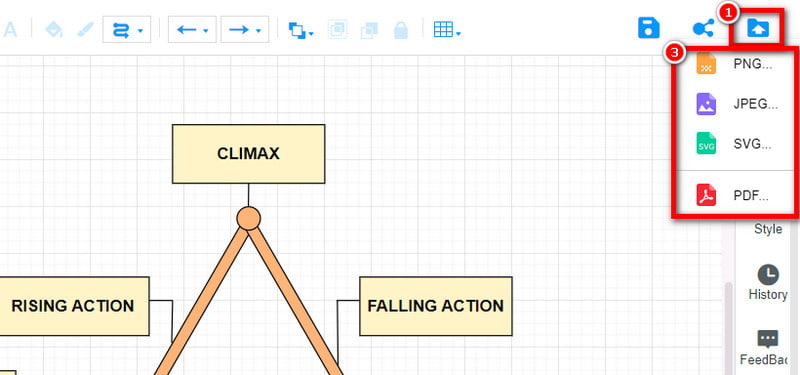
Further Reading
Part 4. FAQs About Story Plot Diagram
What are the 6 main elements of a plot?
The six main elements of a plot are exposition, conflict, climax, rising and falling action, and resolution.
What is the basic plot structure?
The basic plot structure consists of three main parts: beginning, middle, and end.
What are the 4 types of plot structures?
The four types of plot structures are linear, cyclical, episodic, and parallel.
Conclusion
In conclusion, a story plot diagram is a beneficial tool for understanding the structure of a story. It helps us break down a narrative into its essential elements. Hence making it easier to analyze and appreciate the journey of characters and events. But, in order to achieve a perfect story plot diagram, you need the best diagram maker. Look no further, as MindOnMap might be that one! With its easy-to-use interface and easy-to-understand features, you’ll be able to make a personalized diagram. Besides being an excellent diagram maker for a story plot, it offers other templates to create various visual presentations.









